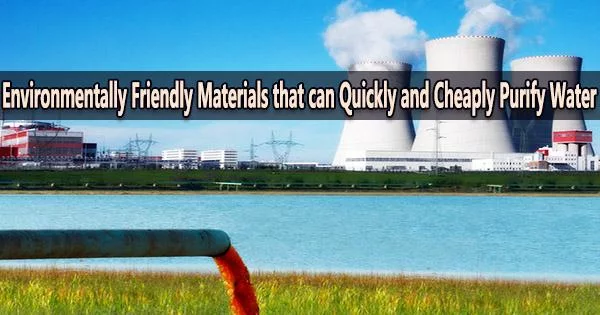Activated carbon and zeolites are commonly used as eco-friendly materials for water purification, due to their ability to absorb impurities. They are made from natural and abundant raw materials, such as coconut shells and volcanic rock, and can be produced at a relatively low cost.
DGIST Department of Energy Science and Engineering Professor Park Chi-Young’s team successfully developed an ‘atypical porous polymer material’ that can completely remove phenolic organic contaminants in water at ultra-high speeds. Based on the photothermal effect, the porous material created this time can effectively remove both extremely small-sized VOCs and microplastics from water.
It is also anticipated that it will be used as a high-efficiency adsorption material that can be marketed in the future due to its competitive raw material costs and ability to purify water using the sun.
Environmental contamination has several causes, but one prominent issue is water pollution, which is brought on by the chemical industry’s rapid rise. To address this issue, numerous water purifying methods and materials have been created.
The sluggish adsorption rate and high heat energy needed for recycling are constraints of carbon-based porous materials employing current adsorption processes. It has been challenging to produce materials that concurrently fulfill outstanding recyclability, high efficiency, inexpensive raw material efficiency, and industrialization potential. Various materials have been developed to improve pollutant removal efficiency.
The technology we developed here is an unrivaled water purification technology with the world’s highest purification efficiency, removing more than 99.9% of phenolic microplastics and VOC contaminants in water at ultra-high speeds. We expected that it will be a universal technology with high economic efficiency that can purify contaminated water and supply drinking water even in areas where there is no power supply.
Professor Park Chi-Young
DGIST Department of Energy Science and Engineering Professor Park Chi-Young’s team succeeded in synthesizing a porous polymer with excellent adsorption performance and photothermal properties by reacting an inexpensive and effective precursor.
The polymer was also subjected to an extra oxidation reaction, and based on the outcomes, a hydrophilic functional group was added to allow for quick adsorption of micro-pollutants in the aquatic environment.
Furthermore, it was demonstrated through studies that the polymer created by the study team can be recycled numerous times without losing effectiveness. It does not require a lot of thermal energy.
Through the new polymer’s capacity to comprehensively absorb light and transform that absorbed light into heat, the research team created a water treatment membrane capable of evaporating water utilizing solar energy as a driving force.
As a result, it was established that phenolic pollutants may be removed using sunlight by the water treatment membrane coated with the oxidized polymer.
DGIST Department of Energy Science and Engineering Professor Park Chi-Young said, “The technology we developed here is an unrivaled water purification technology with the world’s highest purification efficiency, removing more than 99.9% of phenolic microplastics and VOC contaminants in water at ultra-high speeds. We expected that it will be a universal technology with high economic efficiency that can purify contaminated water and supply drinking water even in areas where there is no power supply.”
Meanwhile, this research was conducted with the support from the National Research Foundation of Korea’s Leading Researcher Support Project and Nano and Material Technology Development Project, and Cho Wan-soo from the DGIST Department of Energy Science and Engineering, Choi Gyeong-hyeon in the master-doctoral combined program, and Lee Dong-joon in the master’s program participated as the lead authors.
The research results were selected and published as the cover paper for the 50th edition of Advanced Materials.





